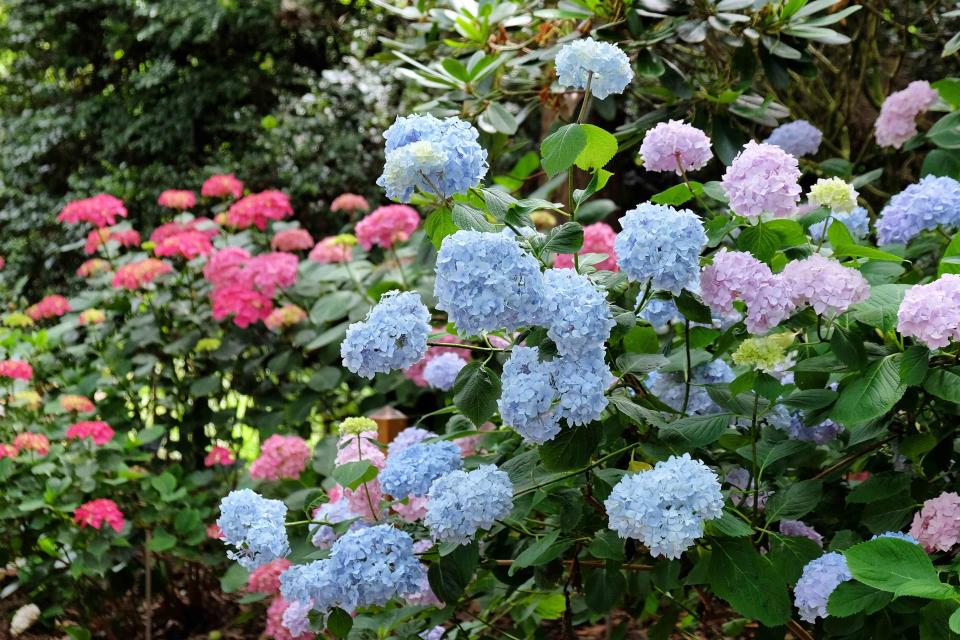12 Plants You Should Never Grow Next to Each Other
A more harmonious garden starts here.

Alex Manders/Getty Images
Spring is officially here. If you’re thinking about planting a garden, now is the right time to start planning. You might even have a few ideas in mind for what you'd like to plant. However, while we hate to be the bearer of bad news, it’s important to keep in mind that certain plants just aren’t compatible. So even if you grow them perfectly under ideal conditions, like feuding neighbors, these plants might not coexist harmoniously. Here are some plants you shouldn’t grow next to each other.
Related: 5 Fail-Proof Plant Combinations for a Gorgeous Front Yard
Drought-Tolerant Plants and Moisture-Loving Plants
Looking to grow a variety of plants in your garden? According to Bliss Bendall, NYBG-certified horticulturist, if you’re considering planting drought-tolerant plants next to moisture-loving plants, you might want to think again. It could end up giving your drought-tolerant plants root rot. So try to station these two types of plants as far away from each other as possible.
Gardenias With Just About Anything
Bendall also tells me it's best to avoid planting gardenias next to anything else. This is because, while these flowers are gorgeous, they are known for chronic diseases. “If one gets sick—all of them will get sick and die. It’s best to plant gardenias on their own.”
Garlic With Other Veggies
While garlic can elevate your favorite dish, it rarely does the same for the other plants in your garden. Bendall explains, “Garlic builds up sulfur in soil and that will stunt the growth of your legumes, beans, and peas, along with other leafy greens such as parsley. Garlic is best planted in an area alone or only with other sulfur-tolerant plants.”
Knockout Roses and Annabelle Hydrangeas
Knockout Roses and Annabelle Hydrangeas look gorgeous next to each other in a bouquet, but they’re not an optimal choice to plant adjacently according to Sara Downing, OvS Principal. “Aesthetic goals and ecological context are both critical to selecting plants that share a space. First, plants should be similar in many ways—the type of soil they like to grow in, their USDA hardiness zone, the amount of light they receive, and the amount of water they need. At a minimum, roses want full sun and most hydrangeas prefer shade, so they wouldn’t thrive under the same conditions.”
She adds another problem is that these flowers grow differently in other ways. “Different foliage textures, different bloom impact, different overall form, and different types of root systems so that they don’t compete for the same space. Quite simply, they should complement each other. Roses and hydrangeas are both shrubs that want to fill the same space, and arguably speaking, they compete with each other aesthetically with their high-impact ornamental blooms.”
Tomatoes and Potatoes
Who doesn’t love a fresh tomato in a salad or a warm potato as a side dish? While it’s fine to keep these veggies on the same plate, they probably shouldn’t share the same soil. Sara Abbass, owner of Sara Mairead Landscape Design, advises growing tomatoes away from potatoes along with cabbage and broccoli. “These are all competitors for the same nutrients! Potatoes and tomatoes are in the same family and will compete for not only nutrients but are susceptible to the same diseases such as blight,” she explains. “Plants in the Brassica family are also susceptible to the same fungal diseases as tomatoes and should be planted apart for protection of the respective crops.”
Mint and Everything Else
Fresh mint elevates everything from water to cocktails and even certain recipes. So you might be very excited to grow it. However, according to Abbass, mint is best suited for container planting. “Mint can quickly take over a space and outcompete not only perennials but intertwine in shrubs and push out anything growing in the same vicinity.”
Monarda and Cucumbers
Cucumbers are a wonderful addition to any garden. However, this delicious veggie should not be planted near Monarda. “Monarda is a fabulous pollinator-attracting plant, but unfortunately, it is susceptible to powdery mildew, a persistent fungal disease that cucumbers may also succumb to,” says Abbass. “Consider planting Mmonarda in a large planter to enjoy the benefit of their attraction for pollinators or consider a more disease-resistant species, Monarda bradburiana.”
For more Real Simple news, make sure to sign up for our newsletter!
Read the original article on Real Simple.

